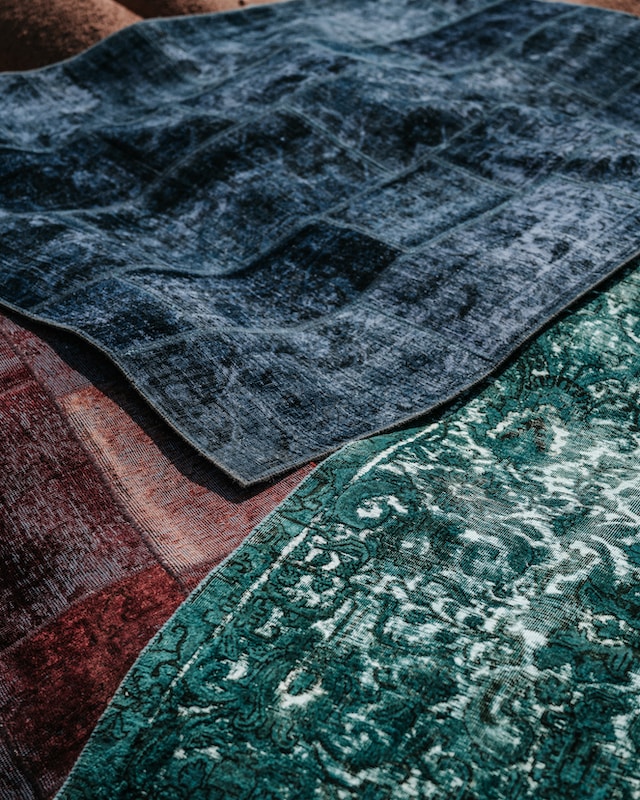
Rug weaving is a centuries-old craft that has been practiced around the world. It involves using various types of rugs and materials to create beautiful pieces of art that can be used as floor coverings, wall hangings, or even furnishings. The most common types of rug material are wool, cotton, silk, and jute. Wool is known for its durability and ability to absorb sound; it can be found in many different patterns and colors. Cotton is soft yet strong, making it ideal for use in rugs with intricate designs. Silk provides a glossy shine and luxurious feel; these luxury rugs often feature elaborate designs and colors. Jute is also used in rug weaving due to its strength and affordability; this material is often seen in plainer designs with neutral tones. Each type of rug offers unique characteristics that make them perfect for their intended purpose, allowing weavers to create stunning works of art that will last for years to come!
Rug weaving is a craft that has been passed down through generations and holds deep cultural significance around the world. It is an art form that dates back centuries, with many traditional rug styles being associated with specific regions or ethnic groups.
Rug weaving often involves intricate designs and complex techniques, and can be seen as an expression of identity and artistic creativity. For example, Persian rugs are known for their exquisite patterns and vibrant colors, while Navajo rugs feature simpler geometric shapes derived from Native American symbolism. In Europe, traditional carpets often depict floral motifs, heraldic devices and scenes of everyday life.
The materials used in rug weaving vary depending on the region where it is made. Wool is perhaps the most common material used due to its softness and durability, but other natural fibers such as cotton, jute or hemp may also be used. This diversity of textures can create unique effects when combined in different combinations. Furthermore, dyes extracted from plants can add color to the design - creating beautiful works of art that capture a culture's essence.
For many people, rug weaving remains an important part of their heritage - carrying stories of family history or ancestral customs within its patterned weave. Whether it be handed down from generation to generation or bought at a market place, each rug carries its own unique story behind it - one which will be preserved for years to come.

Rug weaving is an art form that has been around for centuries. It requires skill, patience, and a variety of techniques to create beautiful pieces. Crafting a rug can be both rewarding and challenging. To get started, you will need the right materials such as yarn, needles, and looms. Additionally, some basic knowledge of colors and patterns is essential for creating a unique design.
Once you have gathered your supplies, begin by selecting yarns in complementary hues or textures that will work together to create the desired effect. You may also choose to mix wool with other fibers for added texture. The next step is to determine the size of your rug and decide how many rows and columns it should contain. This will help you calculate the amount of material needed as well as ensure that all knots are evenly spaced throughout the piece.
The actual weaving process involves tying individual strands of yarn together into intricate knots called “weft” and “warp”. This can be done manually with a needle or with specialized machines depending on the complexity of your design. As you progress through the project, take care to keep tension even across each row so that no gaps appear in your finished product.
Finally, once the rug has been completed it is important to secure all knots with glue or wax to prevent them from coming undone during use or transport. With these simple steps in mind, anyone can become an expert at crafting beautiful rugs!
A rug can be a great way to add warmth and style to any room, but it is important to choose the right colors and patterns for your rug. When selecting a rug, consider the size of the room and its existing color scheme. Bold colors and patterns are best for larger rooms, while more subtle tones are recommended for smaller spaces. Consider also the shape of the rug – round or rectangular? Different shapes will create different effects in a room.
When it comes to choosing colors, warm shades such as creams, tans, or oranges add cheerfulness to any space. If you want something with more character, try bolder hues like dark greens or blues. Patterns can range from traditional floral designs to modern geometric shapes – whatever fits your taste! Be sure that whichever pattern you choose complements your home's existing decor.
Lastly, pay attention to material when picking out a rug; wool is durable and comfortable while synthetic fibers may be cheaper but lack softness underfoot. Don't forget texture too – flat weaves have an airy feel whereas shag rugs bring added cosiness. With careful consideration, you're sure to find the perfect combination of colors and patterns for your rug weaving project!


When purchasing a hand-woven rug, it is important to consider many factors. First, decide on the desired size and shape of the rug. Look at the fabric used in its construction - wool or synthetic? Consider also the texture; does it feel soft and supple, or stiff and rigid? Note any unique patterns or colors that stand out. Additionally, investigate how long it took to make. A longer weaving time often indicates higher quality workmanship. Finally, inspect the edges for fraying or wear. Taking these steps can help ensure you select a beautiful and durable hand-woven rug that will last for years!
Caring for your woven rug doesn't have to be complicated. With a few simple steps, you can keep your rug looking beautiful and lasting longer. First, vacuum regularly with a brush attachment to remove dirt and debris that might get embedded in the fibers of the rug. Next, avoid placing furniture directly on top of the rug as this can cause matting and crushing of the fibers. Additionally, consider using a carpet protection pad underneath your rug to help reduce wear and tear from foot traffic. Lastly, have professional cleaning performed periodically to ensure your rug is free of dust mites and germs that could potentially cause allergies or other health problems. Following these tips can help keep your gorgeous woven rug looking great for years to come!
Wool, cotton, jute, silk and other natural fibers are commonly used to weave rugs.
Common rug weaving techniques include hand-knotting, hand-tufting, hand-hooking and flatweaving.
The amount of time required to weave a rug depends on the type of technique used as well as the size of the finished product. Generally speaking, hand-knotting can take several months or longer while simpler techniques may be completed in much less time.